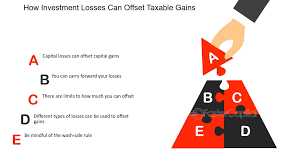How Purchase Price Affects Capital Gains in Finance

Firstly, a higher purchase price will result in a higher cost basis for the asset. The cost basis is the original value of the asset, including any additional costs such as commissions or fees. When you sell the asset, the capital gain is calculated by subtracting the cost basis from the selling price. Therefore, a higher purchase price will lead to a smaller capital gain or even a capital loss if the selling price is lower than the cost basis.
On the other hand, a lower purchase price can potentially lead to a larger capital gain. If you purchase an asset at a lower price and sell it at a higher price, the difference between the selling price and the lower cost basis will be greater, resulting in a larger capital gain. This is why investors often seek to buy assets at a lower price in order to maximize their potential capital gains.
Types of Capital Gains

There are two types of capital gains: short-term and long-term. Short-term capital gains are generated from the sale of assets held for one year or less. Long-term capital gains, on the other hand, are generated from the sale of assets held for more than one year. The tax rates for short-term capital gains are typically higher than those for long-term capital gains.
Calculating Capital Gains
For example, if you purchased a stock for $100 and sold it for $150, your capital gain would be $50. However, if you incurred $10 in brokerage fees, your net capital gain would be $40.
Tax Implications
Capital gains are subject to taxation. The tax rate depends on the holding period of the asset and the individual’s tax bracket. As mentioned earlier, short-term capital gains are typically taxed at higher rates than long-term capital gains.
There are also certain tax advantages available for long-term capital gains. For example, in some countries, long-term capital gains may be eligible for lower tax rates or even tax exemptions. It is important to consult with a tax professional or financial advisor to understand the specific tax implications of capital gains in your jurisdiction.
Strategies to Maximize Capital Gains
There are several strategies that investors can employ to maximize their capital gains:
- Buy and hold: Holding onto an asset for a longer period of time may qualify for long-term capital gains, resulting in potential tax advantages.
- Dollar-cost averaging: Investing a fixed amount of money at regular intervals can help mitigate the impact of market fluctuations on capital gains.
- Tax-loss harvesting: Selling assets that have experienced a loss can offset capital gains and reduce tax liabilities.
- Asset allocation: Diversifying investments across different asset classes can help spread risk and potentially increase overall capital gains.
- Rebalancing: Periodically adjusting the portfolio to maintain the desired asset allocation can help capture capital gains and optimize returns.
Impact of Purchase Price on Capital Gains
Capital gains are the profits made from selling an investment at a higher price than its purchase price. The purchase price is the amount of money paid to acquire the investment initially. The difference between the selling price and the purchase price determines the capital gains.
If the purchase price is lower than the selling price, the investor will realize a capital gain. On the other hand, if the purchase price is higher than the selling price, the investor will experience a capital loss.
Investors can maximize their capital gains by implementing strategies such as buying investments at a lower price, timing the sale of investments to take advantage of market trends, and diversifying their investment portfolio to spread the risk.
Strategies to Maximize Capital Gains
- Diversify your portfolio: One way to maximize your capital gains is to diversify your investment portfolio. By spreading your investments across different asset classes, industries, and geographic regions, you can reduce the risk of loss and increase the potential for higher returns.
- Buy and hold: Another strategy to maximize capital gains is to adopt a long-term investment approach. Instead of constantly buying and selling stocks or other assets, consider holding onto your investments for an extended period. This strategy allows you to benefit from the power of compounding and ride out short-term market fluctuations.
- Take advantage of tax-efficient accounts: Utilizing tax-efficient accounts, such as individual retirement accounts (IRAs) or 401(k) plans, can help you maximize your capital gains. These accounts offer tax advantages, such as tax-deferred growth or tax-free withdrawals, allowing your investments to grow more efficiently.
- Reinvest your dividends: If you receive dividends from your investments, consider reinvesting them instead of taking them as cash. By reinvesting your dividends, you can purchase additional shares of the investment, which can lead to increased capital gains over time.
- Stay informed and adapt: It’s crucial to stay informed about market trends, economic indicators, and company news. By staying up to date with relevant information, you can make more informed investment decisions and adjust your strategy accordingly. This adaptability can help you maximize your capital gains.
Remember, maximizing capital gains requires careful planning, research, and patience. It’s essential to assess your risk tolerance, investment goals, and time horizon before implementing any strategy. Consulting with a financial advisor can also provide valuable insights and guidance tailored to your specific situation.

Emily Bibb simplifies finance through bestselling books and articles, bridging complex concepts for everyday understanding. Engaging audiences via social media, she shares insights for financial success. Active in seminars and philanthropy, Bibb aims to create a more financially informed society, driven by her passion for empowering others.
